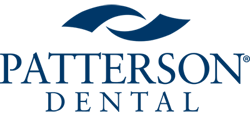
Introduction
In March 2020, the COVID-19 pandemic hit academic and healthcare institutions throughout the US. This resulted in programs being shut down, curtailed, or moved online, depending on the type of program. Faculty had to quickly pivot from teaching in the classroom to delivering their courses online, with very little time to transition to this new way of teaching. This permitted most academic programs to continue with little disruption, though the quality of the content was at times questioned. Healthcare education programs had to contend with the additional challenge of closing down patient-based education to maintain the health and safety of the enrolled students until training could resume. Within dental schools, clinical care was either completely stopped or limited to urgent care needs only, in accordance with guidance from the American Dental Association and the Centers for Disease Control.
Very early on, it was evident that these drastic but necessary curricular changes were impacting the wellness and well-being of students, including those enrolled in healthcare education programs. Several reports have been published that demonstrate the impact COVID-19 has had on medical students in the UK1, Australia2, and Japan3 and a meta-analysis of eight published studies4. The authors of these papers reported medical students experienced enhanced levels of stress and anxiety, loss of social connectedness, and disruption of programs (preceptorships and rotations). Although some studies did indicate that the medical knowledge among these students seemed to mitigate some of the stress and concerns vs. peers in non-healthcare education programs, these reports and others confirmed that the impact of COVID-19 on these students was still significant, especially on perceived preparedness and confidence as they transitioned from student to practitioner. Fear of what impact current and future disruptions would have on their progress towards degree completion was a common concern, regardless of where in the academic program they were at the time of the survey. Some reports also outlined that mitigation steps taken by educational institutions appeared to help with the stress and concern exhibited by the students.
Like their medical student counterparts, dental students were also impacted by the academic and curricular changes brought on by COVID-19. Reports out of Latin America5, New Zealand6, Malta7, and Saudi Arabia8 illustrate that dental students were significantly affected by the pandemic and the changes made to their academic programs. Students expressed similar concerns as medical students regarding progress within educational programs, graduation, achieving competency when clinical activities were substituted with simulations, and the impact COVID-19 may have on the practice of dentistry in the future. Loss of connection and interaction with classmates was often reported, as was concern about family members contracting COVID-19. Some of these reports confirmed an increase in depression and anxiety amongst dental students and the associated increase in certain coping activities. As we all know, dental school is already stressful, and COVID-19 elevated the stress level considerably.
At the West Virginia University School of Dentistry, the administration and faculty shared the concern that their counterparts at other schools had regarding the wellness and well-being of their students during the pandemic. To determine our student community's status and identify areas where mitigation steps could be implemented, the school prepared and administered a survey to assess wellness and well-being among our dental, dental hygiene, and post-graduate student populations.
Materials and Methods
A nineteen-question anonymous wellness survey was developed by the Office of Student Affairs and the Office of Dean. The survey included both open and closed-ended questions. It did not collect any personally identifiable information, other than the respondent indicating which academic program they were enrolled to allow for analysis of results between programs. The survey was uploaded to Survey Monkey and administered to all dental, dental hygiene, and post-graduate students enrolled in December 2020. The survey remained open for three weeks, with reminders sent to all students over this period to increase participation. The results were exported via Microsoft Excel into a summary spreadsheet for analysis and reporting following the survey period. In this paper, we are only reporting on responses provided to closed-ended questions.
The survey was reviewed by the West Virginia Institutional Review Board and was deemed not to require approval based on human subject research guidelines (WVU IRB #2106331496).
Results
We collected 243 responses to the survey (80.7% of the total student population) (Figure 1). Of the survey responses, 155 were dental students (83.3% of the dental student population), 70 were dental hygiene students (81.4% of the dental hygiene student population), and 18 were post-graduate students (62.1% of the post-graduate student population).
In response to the questions about physical wellness and reactions to the use of enhanced personal protective equipment (PPE), students reported general discomfort (50.6%), headaches (42%), and facial dermatitis (37%) as the most frequently experienced physical reactions due to enhanced PPE implemented because of the pandemic (Figure 2). Those reporting not having experienced any type of physical reaction made up 20.2% of the respondents. As a result of many class sessions being held virtually, eye strain (50.2%), back pain (37%), and headaches (36.6%) were also reported (Figure 3).
When asked if COVID-19 has negatively impacted their mental health, 54.3% of respondents reported yes (Figure 4).
Of the survey respondents, 93.4% reported communicating with their advisor, team leader, and course instructors as needed, and 29.2% of all respondents reported expressing concerns over well-being-related issues to their advisor, team leader, and/or course instructor(s) (Figures 5 and 6).
For the questions about general wellness and adverse conditions, difficulty concentrating (53%), anxiety (50.2%), loss of connectivity/feeling isolated (47.7%), weight changes (41.2%), and a decrease in quality of sleep (40.7%) were the most reported conditions/symptoms experienced during the ongoing COVID-19 pandemic (Figure 7). When asked to rate their overall well-being since August 2020, 48% of respondents reported being moderately good, 22.2% said they were neither good nor bad, and 19.9% reported overall well-being to be moderately bad (Figure 8).
Students reported the top five most challenging issues faced during the ongoing COVID-19 pandemic to be: concern for the health of myself and/or my family, balancing work or school with personal/familial obligations, managing additional school responsibilities in addition to COVID-19, staying connected to your family/friends/organizations, and interruption of work/school due to COVID-19 (Figure 9).
The top reported coping strategies to support mental wellness during COVID-19 were familial support, in-person interaction with friends, exercise, and spending time with pets (Figure 10).
When asked to report how hopeful they were about achieving school-related goals over the next six months (on a scale of 1-10, with 1=not at all hopeful and 10= extremely hopeful), the average response was a 7.4 for all respondents, with only slight variation between residents, dental and dental hygiene students' responses.
Discussion
The literature continues to include reports on the adverse impact that COVID-19 has had on the mental well-being of individuals, especially those who already were suffering from mental health problems. In early October 2021, a study published in the Lancet9 summarized, in a systematic review, the effects of COVID-19 on depressive and anxiety disorders in 204 countries. This review confirmed what we already knew – that COVID-19 has had a pronounced and detrimental impact on those suffering from anxiety and depression and that COVID-19 resulted in a 25% increase in new cases of anxiety disorders.
The challenges from COVID-19 within dental care and dental education have unfortunately continued since our survey. We experienced an emotional high during the late spring and early summer of 2021 when infection rates and hospitalizations decreased as vaccination rates increased. The Delta Variant, which emerged over the summer months, has quickly reversed these positive trends and we have seen a slowing of vaccinations since the early summer.
Having the survey results available during the spring semester of 2021 allowed the school's administration and Wellness Committee to focus on critical areas of student wellness, marshaling the support of our Health Sciences Center and campus mental health resources. The Wellness Committee executed several activities to engage students, provide support, and demonstrate the school's concern for their well-being. Response to these efforts has been very positive, and the committee has continued these efforts into the Fall term.
At WVU, the return to in-person classes (while masked) has had a significant impact on the overall well-being of our students. The ability for students to engage in person with their classmates and faculty appears to have a positive effect on their mental wellness. This does not suggest that there are not students who are struggling and in need of support. A follow-up to the baseline survey reported in this paper seems warranted. Plans are currently underway to administer the survey before the end of the academic semester, allowing the school to see what has changed since the baseline, assess the impact of efforts to address issues identified in the baseline survey, and implement additional actions as necessary.
__________
Valerie Perrine, DDS
Associate Dean for Student Affairs, Community Health and Outreach
West Virginia University School of Dentistry
PO Box 9404
Morgantown, WV 26506
Fotinos S. Panagakos, DMD, PhD
Associate Dean for Research
West Virginia University School of Dentistry
PO Box 9448
Morgantown, WV 26506
References
- Choi B, Jegatheeswaran L, Minocha A, Alhilani M, Nakhoul M, Mutengesa E. The impact of the COVID-19 pandemic on final year medical students in the United Kingdom: a national survey. BMC Med Educ. 2020 Jun 29;20(1):206
- Lyons Z, Wilcox H, Leung L, Dearsley O. COVID-19 and the mental well-being of Australian medical students: impact, concerns and coping strategies used. Australas Psychiatry. 2020 Dec;28(6):649-652
- Arima M, Takamiya Y, Furuta A, Siriratsivawong K, Tsuchiya S, Izumi M. Factors associated with the mental health status of medical students during the COVID-19 pandemic: a cross-sectional study in Japan. BMJ Open. 2020 Dec 10;10(12):e043728
- Lasheras I, Gracia-García P, Lipnicki DM, Bueno-Notivol J, López-Antón R, de la Cámara C, Lobo A, Santabárbara J. Prevalence of Anxiety in Medical Students during the COVID-19 Pandemic: A Rapid Systematic Review with Meta-Analysis. Int J Environ Res Public Health. 2020 Sep 10;17(18):6603
- León-Manco RA, Agudelo-Suárez AA, Armas-Vega A, Figueiredo MC, Verdugo-Paiva F, Santana-Pérez Y, Viteri-García A. Perceived Stress in Dentists and Dental Students of Latin America and the Caribbean during the Mandatory Social Isolation Measures for the COVID-19 Pandemic: A Cross-Sectional Study. Int J Environ Res Public Health. 2021 May 30;18(11):5889.
- Loch C, Kuan IBJ, Elsalem L, Schwass D, Brunton PA, Jum'ah A. COVID-19 and dental clinical practice: Students and clinical staff perceptions of health risks and educational impact. J Dent Educ. 2021 Jan;85(1):44-52
- Agius AM, Gatt G, Vento Zahra E, Busuttil A, Gainza-Cirauqui ML, Cortes ARG, Attard NJ. Self-reported dental student stressors and experiences during the COVID-19 pandemic. J Dent Educ. 2021 Feb;85(2):208-215.
- Hakami Z, Khanagar SB, Vishwanathaiah S, Hakami A, Bokhari AM, Jabali AH, Alasmari D, Aldrees AM. Psychological impact of the coronavirus disease 2019 (COVID-19) pandemic on dental students: A nationwide study. J Dent Educ. 2021 Apr;85(4):494-503.
- COVID-19 Mental Disorders Collaborators (please see article for a complete list of authors.) Global prevalence and burden of depressive and anxiety disorders in 204 countries and territories in 2020 due to the COVID-19 pandemic. Published online October 8, 2021, https://doi.org/10.1016/S0140-6736(21)02143-7
Image Credit: filadendron/E+/Getty Images


